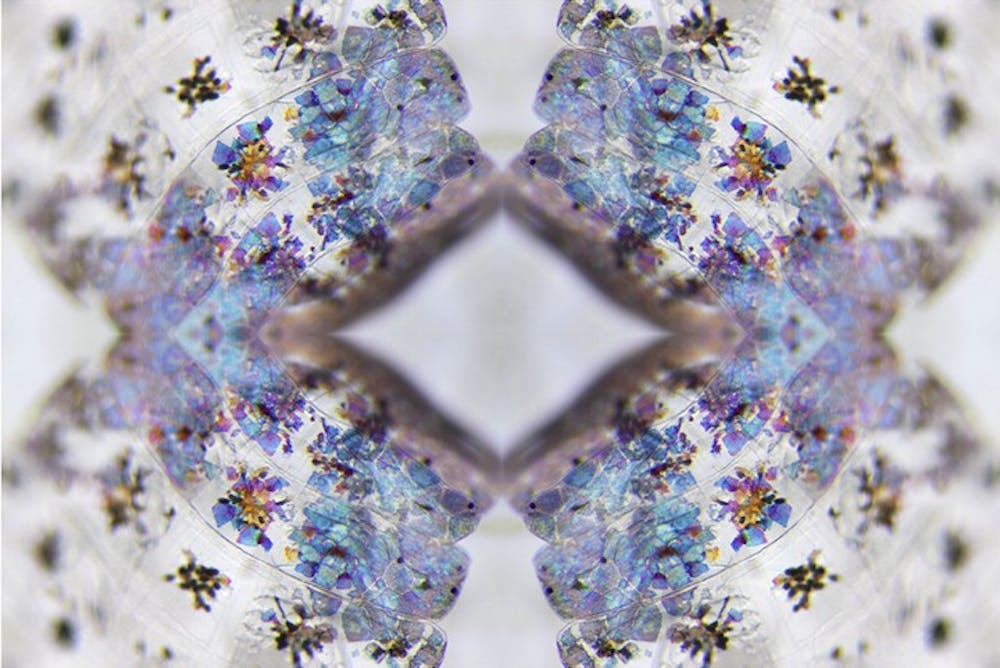Plenty of science students show their findings in lengthy research papers, but Julia Bennett, a fourth-year marine science student, combined research, her love of photography and the beauty of the ocean to create an award-winning portfolio.
As part of winning USC’s Portfolio Photography Review, Bennett’s photos are now on display at the Columbia Museum of Art. The opening reception of her exhibit “Into the Umbra” took place Tuesday, Jan. 20.
After she received a Magellan Scholarship, Bennett used it to fund her research in marine photography while studying at the University of Queensland in Australia during the spring of 2014.
Throughout the semester, Bennett worked with the Integrated Marine Observing System to bring her project to life. Bennett’s collection captures microscopic planktons’ abstract arrangements to draw a connection between the unknown and outer space.
“I am really interested in abstraction as a way to engage an audience that otherwise wouldn’t be engaged,” Bennett said. “People are really curious when they see something they don’t understand, which I think is a really effective way to get people to ask questions, stay with your images a little longer and care a little more.”
Bennett aims to engage audiences with the ocean and to remind them of its beauty with her portfolio. And if she could take it one step further, she'd add in the dangers of ocean pollution.
She grew up in landlocked Philadelphia, but that never stopped her from developing a strong connection with the ocean, especially since her grandfather was a lifelong sailor.
“The ocean was sort of always a constant in my life," Bennett said.
She got her start in photography in high school, but Bennett immersed herself even further when she came to college. For her, a creative outlet like photography is a great stress reliever from her rigorous marine science courses.
She originally worked with black and white film photography but switched to digital for this project to better portray the view through a microscope.
“I was always doing photography and marine science simultaneously but separately,” she said. “This is the first time I have been able to bridge them.”
Her experience with plankton during her second marine science class is what struck her interest in the microscopic aspect of the ocean’s grandeur — she said she was "blown away by the details" and gave her an idea of what the ocean really looked like.
It can be tempting, she said, but Bennett avoids editing the images so as to preserve the ocean’s natural beauty. Light is manipulated within the microscope to create the vibrant images and reflection is used to create some of the abstract shapes in her photos.
"Most of this was all new to me, too,” she said. “It was sort of an experiment."
As a marine science student, Bennett feels passionately about protecting the ocean from pollution — her photography exhibit is not only to showcase nature's beauty, but also its fragility. For her, calling attention to the ocean’s majesty doesn’t stop with her photography — she’s looking to build a career protecting the sea.
“I think that working in some kind of conservation field would be good for combining my passion for photography and marine science,” she said. “It just is important to me that I'm making work that I care about, and I'm conveying messages that I feel are important.”
Bennett’s portfolio is on display in the Columbia Museum of Art’s Community Gallery. The museum offers student admission for $5 and free admission on Sundays.
“I would like to give students the advice to not be afraid if they are interested in two seemingly opposite things, to bridge them,” Bennett said. “[You] shouldn’t be afraid to go after things ... You don’t have to pick just one interest.”


